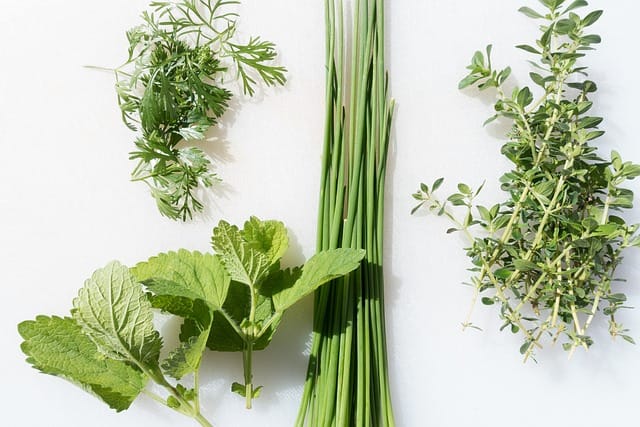How to grow Lemon thyme
Lemon thyme is an aromatic herb that belongs to the mint family

In this article:
- Introduction to Lemon Thyme
- Choosing the Right Growing Conditions
- Preparing the Soil for Lemon Thyme
- Starting Lemon Thyme from Seeds
- Propagating Lemon Thyme from Cuttings
- Transplanting Lemon Thyme
- Watering and Mulching Lemon Thyme
- Fertilizing Lemon Thyme
- Pruning and Harvesting Lemon Thyme
- Common Pests and Diseases of Lemon Thyme
- Companion Plants for Lemon Thyme
- Culinary and Medicinal Uses of Lemon Thyme
- Storing and Preserving Lemon Thyme
- Frequently Asked Questions (FAQs) about Growing Lemon Thyme
- Conclusion
Introduction to Lemon Thyme
Lemon thyme is an aromatic herb that belongs to the mint family. It is known for its lemony fragrance and flavor, which makes it a popular herb in culinary and medicinal uses.
Choosing the Right Growing Conditions
Lemon thyme thrives in a sunny location with well-draining soil. It requires at least 6 hours of sunlight per day. Choose a spot in your garden that receives ample sunlight.
Preparing the Soil for Lemon Thyme
Lemon thyme prefers slightly alkaline soil with a pH range of 6.5 to 7.5. Prepare the soil by adding organic matter, such as compost, to improve its fertility and drainage. Ensure the soil is loose and well-aerated.
Starting Lemon Thyme from Seeds
Start lemon thyme from seeds indoors about 6-8 weeks before the last frost date. Sow the seeds in a seed tray or individual pots filled with seed-starting mix. Keep the soil moist until the seeds germinate, which usually takes 1-2 weeks.
Propagating Lemon Thyme from Cuttings
Lemon thyme can also be propagated from cuttings. Take 4-6 inch stem cuttings from a healthy lemon thyme plant and remove the lower leaves. Dip the cut end in a rooting hormone powder and plant it in a well-draining potting mix. Keep the soil damp until roots develop.
Transplanting Lemon Thyme
When the seedlings or rooted cuttings have grown to a suitable size (around 3-4 inches), they can be transplanted into your garden or larger containers. Choose a location with well-draining soil and space the plants about 12-18 inches apart.
Watering and Mulching Lemon Thyme
Water lemon thyme regularly to keep the soil evenly moist, especially during dry spells. Avoid overwatering, as it can lead to root rot. Apply a layer of organic mulch around the plants to conserve moisture and suppress weed growth.
Fertilizing Lemon Thyme
Lemon thyme is a light feeder and doesn't require heavy fertilization. Apply a balanced organic fertilizer once in early spring and again in midsummer. Avoid using excessive amounts of nitrogen, as it can promote lush foliage at the expense of flavor.
Pruning and Harvesting Lemon Thyme
Prune lemon thyme regularly to maintain a compact and bushy shape. Trim back about a third of the plant in early spring to encourage new growth. Harvest the leaves as needed by snipping them close to the stem. Regular harvesting promotes bushier growth and improves flavor.
Common Pests and Diseases of Lemon Thyme
The most common pests that may affect lemon thyme include aphids, spider mites, and thrips. Keep an eye out for any signs of infestation and treat them using organic pest control methods such as insecticidal soap or neem oil. Lemon thyme is generally resistant to diseases but may occasionally suffer from root rot if overwatered.
Companion Plants for Lemon Thyme
Lemon thyme thrives when planted alongside other herbs such as lavender, sage, and rosemary. It also makes a great companion for vegetables like tomatoes, peppers, and eggplants.
Culinary and Medicinal Uses of Lemon Thyme
Lemon thyme adds a fresh and tangy flavor to a variety of dishes, including salads, roasted vegetables, marinades, and soups. It can also be used to make infused oils and vinegars. Medicinally, lemon thyme has antimicrobial properties and can be used in teas or as an ingredient in natural remedies for coughs and colds.
Storing and Preserving Lemon Thyme
To store fresh lemon thyme, wrap the stems in a damp paper towel and place them in a plastic bag in the refrigerator. It can stay fresh for up to a week. Lemon thyme can also be dried by hanging the sprigs upside down in a cool, well-ventilated area. Once dried, store the leaves in an airtight container away from direct sunlight.
Frequently Asked Questions (FAQs) about Growing Lemon Thyme
Q: Can lemon thyme tolerate frost?
A: Lemon thyme is a hardy herb and can tolerate light frosts, but it is best to protect it during harsh winters.
Q: Can I grow lemon thyme indoors?
A: Yes, lemon thyme can be grown indoors on a sunny windowsill or under fluorescent lights.
Q: How often should I prune lemon thyme?
A: Lemon thyme should be pruned regularly, ideally after each harvest, to maintain its shape and encourage new growth.
Conclusion
By following the proper growing techniques, lemon thyme can be a valuable addition to your garden. Its delightful lemon scent and versatile culinary uses make it a popular choice among herb enthusiasts. With a little care and attention, you can enjoy the flavor and benefits of lemon thyme throughout the year.
